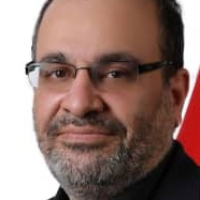Avoidable socioeconomic inequality in mental health distribution in Tehran: Concentration Index standardization approach
Abstract:
Background and Objective
Widespread health inequalities are of grand challenges to health systems. In present study, researchers aimed to measure socioeconomic inequality in distribution of mental disorders in Tehran. Material and Methods
Required data were obtained from Urban HEART (Urban Health Equity Assessment and Response Tool) survey conducted by Municipality of Tehran in 2007. Sample was consist of 22135 people (over 15 years old) selected by systematic cluster sampling method. The Concentration index (C) approach was applied to examine socioeconomic inequality in mental health in Tehran. Concentration index of mental health was demographically (age-sex-ethnicity) standardized in order to determine the level of avoidable inequality. In next step, to control for variables of education, occupation, marital status and economic status which might be related to mental health and demographic variables and prevent from inadvertent standardizing of these variables, these variables also were entered into model. Results
Concentration index of mental health (-0.0673, 95% confidence interval =-0.070 ¬¬¬– -0.057) showed that, there is inequality unfavourable to poorer people in Tehran respecting mental disorders. When the distribution of mental disorders was standardized for demographic composition of the quintiles, the standardized C equalled -0.046 (95% confidence interval =-0.0522 ¬¬¬– -0.0398). This little drop suggests that demographic composition is not the main determinant of observed mental health inequality in Tehran. When they controlled for variables of employment and education, standardized C increased and equaled CI=-0.053 (95% confidence interval =-0.059 ¬¬¬– -0.047). Indeed, the last analysis led to more shrink in inequality attributable to demographics. Conclusion
Since much of the observed inequality in mental health is probably due to social factors and not to demographic ones, therefore the possibility of inequality correction and its avoidance will increaseKeywords:
Language:
Persian
Published:
Journal of North Khorasan University of Medical Sciences, Volume:4 Issue: 3, 2012
Page:
311
magiran.com/p1076548
دانلود و مطالعه متن این مقاله با یکی از روشهای زیر امکان پذیر است:
اشتراک شخصی
با عضویت و پرداخت آنلاین حق اشتراک یکساله به مبلغ 1,390,000ريال میتوانید 70 عنوان مطلب دانلود کنید!
اشتراک سازمانی
به کتابخانه دانشگاه یا محل کار خود پیشنهاد کنید تا اشتراک سازمانی این پایگاه را برای دسترسی نامحدود همه کاربران به متن مطالب تهیه نمایند!
توجه!
- حق عضویت دریافتی صرف حمایت از نشریات عضو و نگهداری، تکمیل و توسعه مگیران میشود.
- پرداخت حق اشتراک و دانلود مقالات اجازه بازنشر آن در سایر رسانههای چاپی و دیجیتال را به کاربر نمیدهد.
In order to view content subscription is required
Personal subscription
Subscribe magiran.com for 70 € euros via PayPal and download 70 articles during a year.
Organization subscription
Please contact us to subscribe your university or library for unlimited access!


